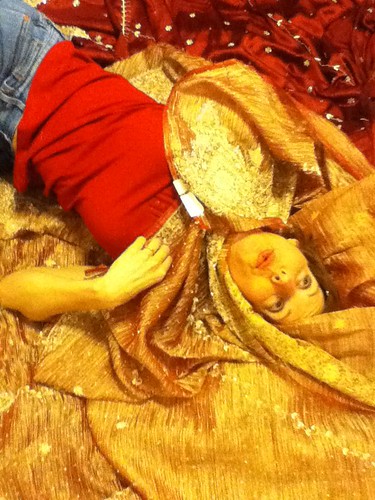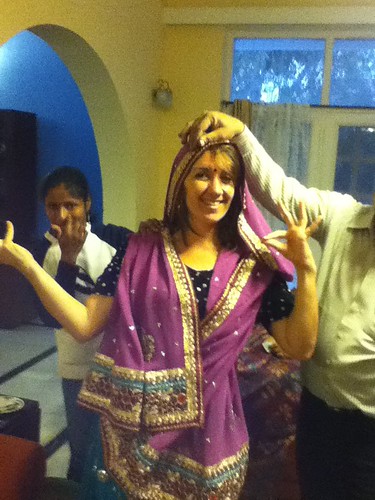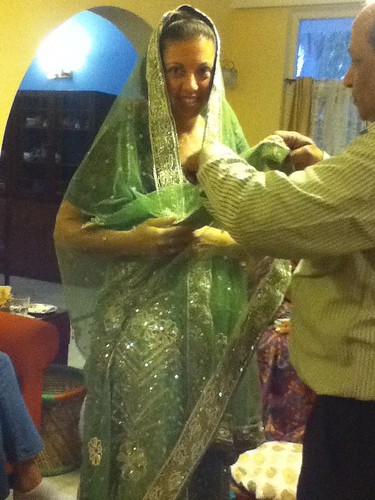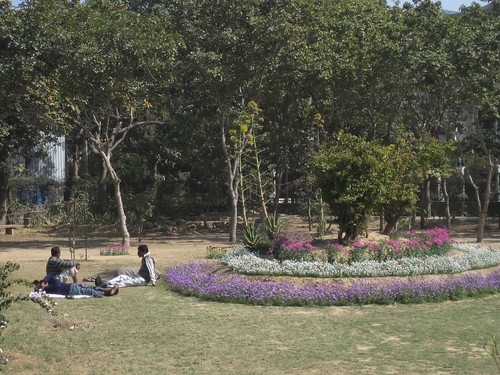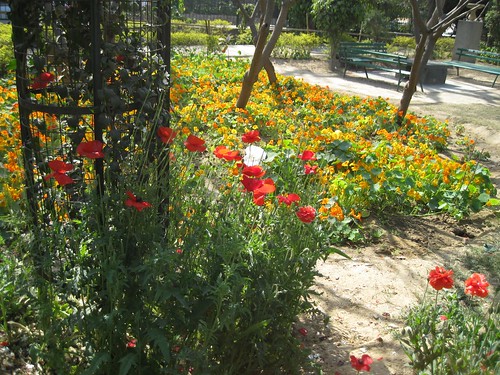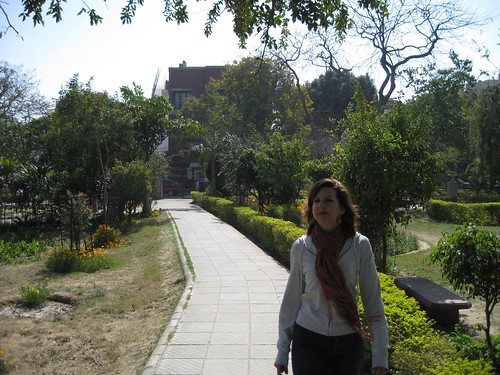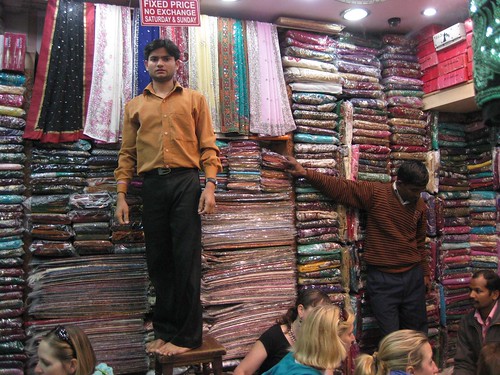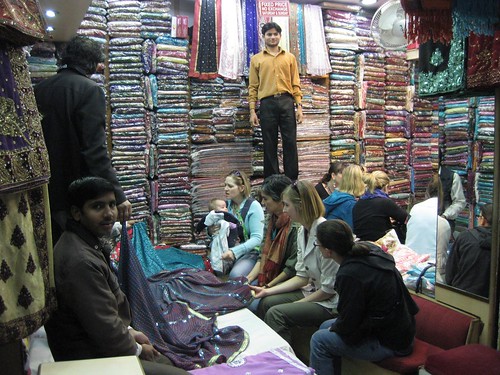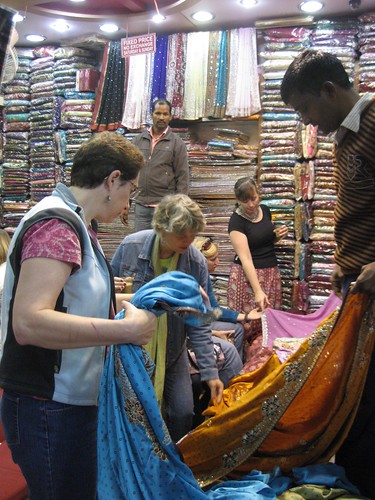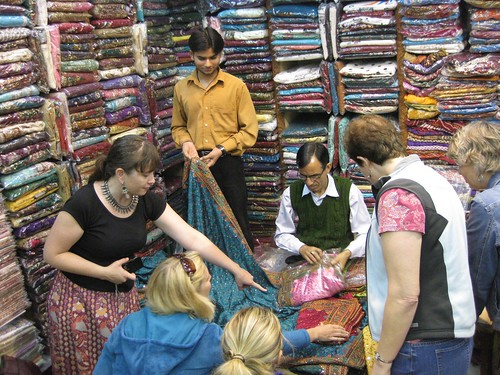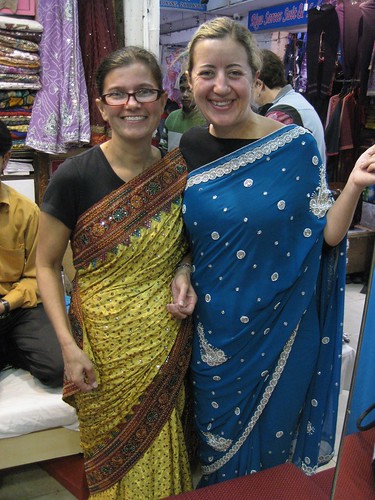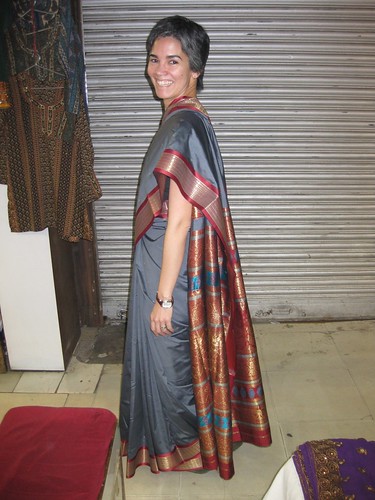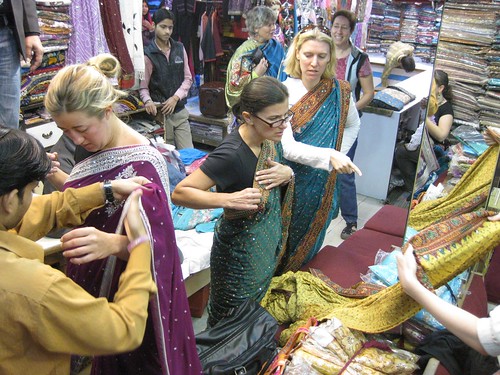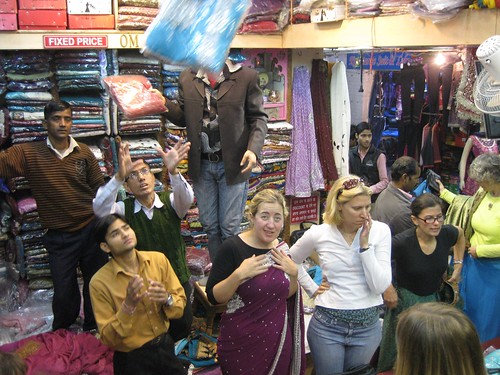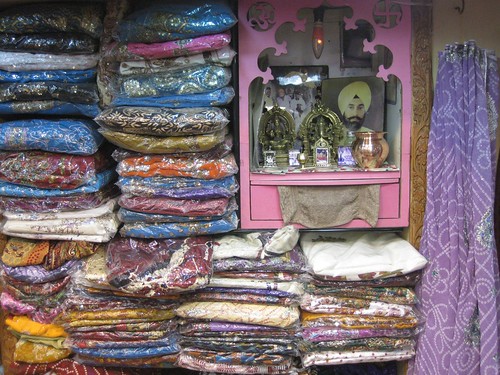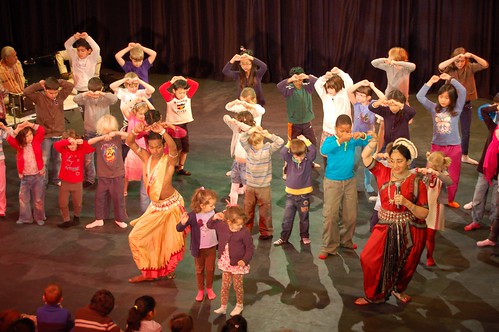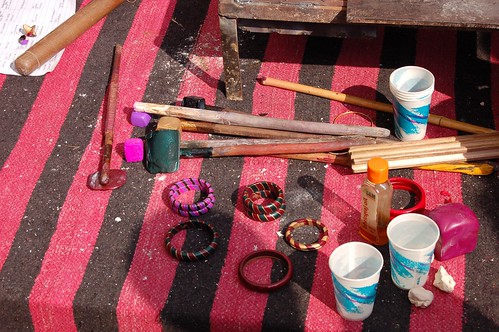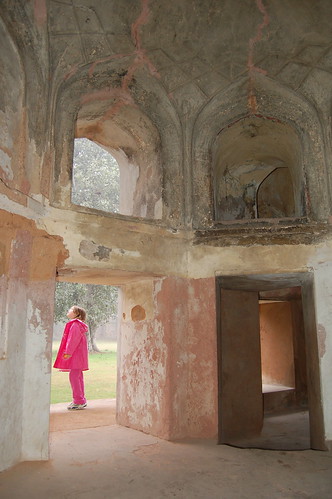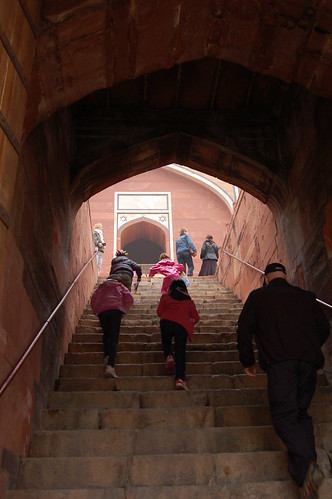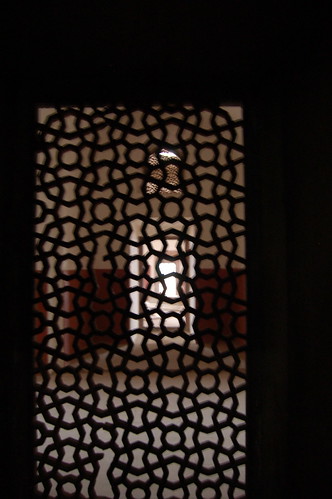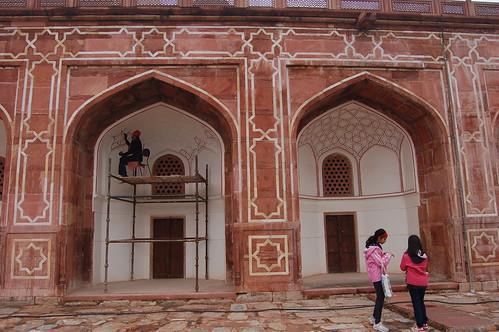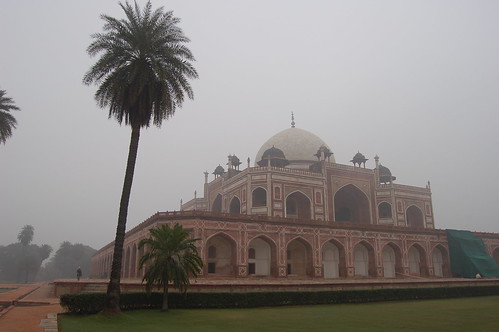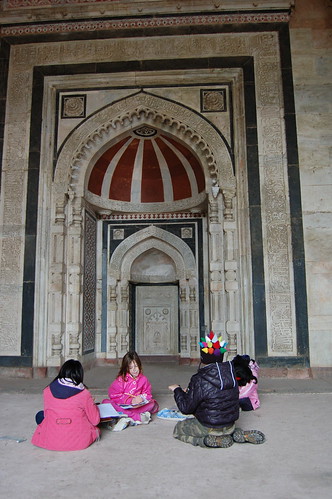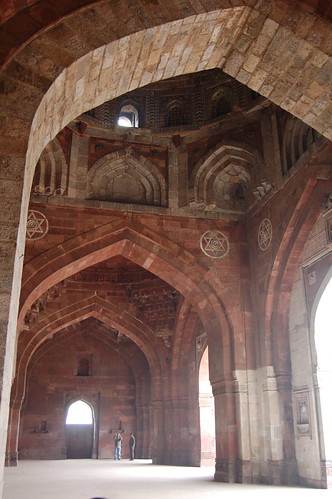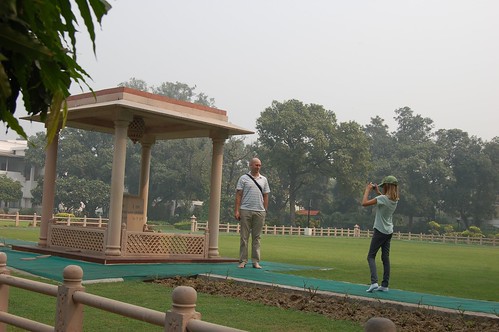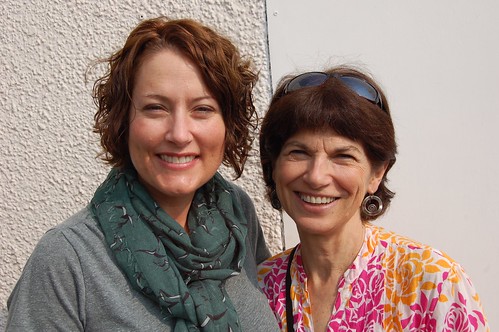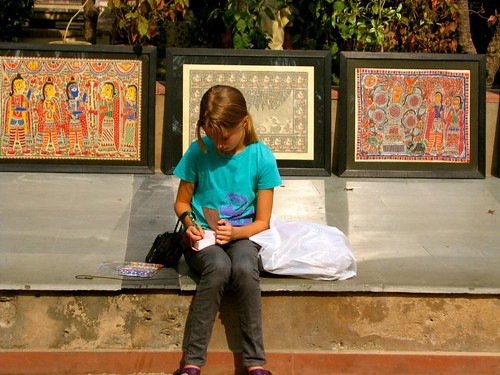Deep sigh.
I’ve avoided writing this post because (a) I’m trying to block out the experience, and (b) because it’s mean and probably unlucky to write a snarky post about an organization that provides care for cancer patients, right? Right.
So, here goes.
CanSupport, a local organization that provides services for cancer patients, recently set up a registration booth for its annual Walk for Life in the school courtyard where I often eat lunch. I figured, “Sure! I’ll pay $6 to benefit this worthy cause and participate in a blog-worthy event.” An all-staff email encouraged participants to walk together with the AES banner. I looked forward to meeting some colleagues and chatting along the route.
On the morning of Feb. 5, I rode to the Walk for Life with a few other teachers, and we tried in vain to hook up with the rest of the AES group. The starting line was literally mobbed with an estimated 8,000 walkers, and the groups with banners stood on the other side of the mob and past some security tape. How were we supposed to get over there? We never did figure it out.
Security at the entrance.

I wanted a photo of our little group with the sign, but before I could stop them, some clowns jumped in the picture. I’m not a huge fan of clowns.

Waiting with the mob: John, me, Katrina and Lea Carol.

The 4-kilometer walk followed Rajpath, (“King’s Road” in Hindi) a street that runs from Delhi’s iconic India Gate to the president’s house. The India Gate was shrouded in smog, but I appreciated it nonetheless.
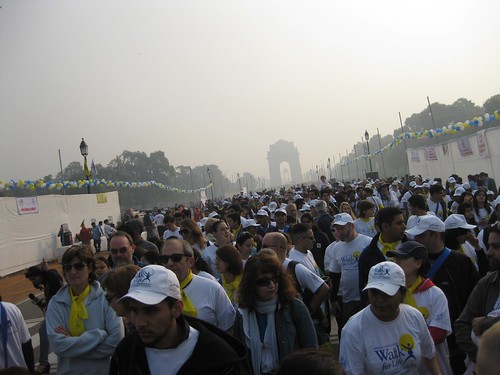
Mrs. Gursharan Kaur, wife of the Prime Minister of India, waved the flag to kick off the walk, and we ever so slowly shuffled forward.
And they’re off! Like a herd of turtles.

I discovered that Delhiwallas walk just like they drive: sprint forward quickly, then stop, turn, move on the diagonal, pause, back up, clump together, push others out of your way, and yell a lot. Many walkers brought their dogs. One canine participant left a steaming souvenir right in the path. Luckily, it happened while there was a gap in front of my group, so we saw and dodged the poo bomb. I’m sure others packed in behind us were not so lucky. Groups of school children shrieked the names of their schools over and over … and over … and over. Individuals spotted acquaintances in the distance and screamed out to them repeatedly, despite the obvious sound-drowning effect of the school kids.
At one point, we passed our AES group after a turn-around point. I could have jumped over the security tape that separated the two paths, but I didn’t want to literally cut corners and cheat myself out of doing the whole walk.

To redeem myself for the self-righteous, culturally insensitive, judgmental nature of this post, I will now provide the link to CanSupport and a heartfelt solicitation for your support. It really is an important organization that brings information, comfort, palliative care, medication and equipment subsidies, and counseling to cancer patients and their families.
The best part is there is a “Donate” button so you never ever have to participate in the Walk for Life again. (Unless you have a crowd/dog poo/high-pitched noise/chaos void you need to fill.)
